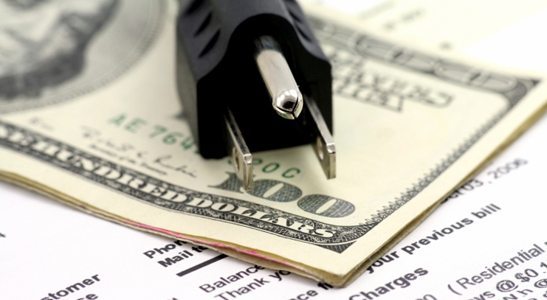Approximately 31 percent of households in the United States have trouble paying their energy bills each month. This can be an especially serious problem during the winter when temperatures drop and folks have to rely more heavily on their heaters to stay warm.
Whether you struggle to pay your heating bill or not, you’ve likely noticed that it rises at certain times of the year. That may also have you thinking about what the average bill is in the U.S.
Read on to find out the answer to this question, as well as learn what kinds of factors influence your heating bill and what steps you can take to lower yours.
How Much Do Americans Spend on Heat?
During the winter, the average U.S. heating costs fall somewhere between $500 and $1,500. Folks who heat their homes with natural gas tend to be on the lower end of the price spectrum, while those who use propane or heating oil end up on the higher end.
Factors That Affect Heating Bill Costs
In addition to fuel type, there are plenty of other factors that contribute to one’s heating costs. The following are some other things to take into account:
Climate
Depending on the climate in your area, you could end up spending much more on heat than the average American. Folks who live in the midwest, for example, will have higher heating costs than someone who lives in southern California.
There’s not a lot you can do about your location, but the cost of utilities is definitely something to keep in mind in the future when you’re thinking about where you want to live next.
House Type and Structure
Older homes are often less energy-efficient than their newer counterparts. If you live in an old home and haven’t taken steps to improve its insulation, you may find that it costs more than you’d like to heat it during the winter.
Even if your house is on the newer side, you could still end up paying a lot of money to heat it if you have cracks or gaps in your windows that let cool air in and warm air out.
Thermostat Settings
No matter how well-sealed your house is, you’re still going to run into higher-than-average heating bills if you’re not paying attention to how your thermostat is set.
Keeping the thermostat at a consistent setting will save you from always having to adjust the temperature, and you can make sure that it only kicks on when you really need it to.
This is easier than ever thanks to the advent of smart thermostats, which allow you to control the temperature of your home through a handy app.
Tips for Lowering Your Bill
If you find it frustrating to shell out hundreds or even thousands of dollars to heat your home each year, you’re in luck. There are plenty of steps you can take to lower your bill without freezing during the winter months. Here are some tips to try today:
Lower the Thermostat
One of the easiest ways to reduce your heating bill is to lower the thermostat. Turning it down by just a couple of degrees can have a huge impact on the amount of energy it takes to heat your home. This, in turn, can result in significant savings.
It’s especially important to lower the temperature on your thermostat when you’re out of the house. There’s no sense in keeping it toasty warm when no one is there to enjoy the heat, right?
Bundle Up
When you lower the temperature on the thermostat, your house is, of course, going to be a little colder.
If you’re hoping to save money on your heating bills, you should start getting comfortable with bundling up. Get used to wearing socks or slippers inside, and throw on a sweatshirt instead of cranking up the heat.
This might be a bit of an adjustment at first. When you see how much lower your heating bill is, though, chances are you’ll end up being okay with wearing an extra layer while in the house.
Watch Your Water Heater
When most people think of heating costs, they only think about the heat that comes from their thermostat.
Don’t forget about what it costs to heat the water you use for bathing and cleaning, though. Turning down the temperature a bit on your water heater can help you to lower your heating costs in a significant way.
You don’t have to lower it by a noticeable amount, either. Going from 140 degrees to 130 or 120, for example, can make a big difference in the number on your monthly bill.
Reduce Your Water Usage
It doesn’t matter how much you lower the temperature on your water if you’re using way more than usual during the winter.
Yes, a long hot shower or bath feels great on a chilly winter evening or morning, and we’re not saying you can never enjoy this. Make it an occasional treat instead of a nightly occurrence, though.
This will help to make your lowering of the water heater temperature worth it, and you’ll get the added bonus of knowing you’re conserving water and helping the planet.
Seal Up the Cracks
If you have lots of cracks in the exterior of your home or gaps between your window and the frame, you’re going to be letting a lot of hot air out (and a lot of cold air in) whenever you run your heater.
There’s no need for you to spend your hard-earned money heating the outdoors. Instead, use caulk and weather stripping to seal gaps and keep the heat where it belongs: inside your house.
This might seem like a daunting project, but it doesn’t take as long as you’d think. You can likely wrap it up in an afternoon.
Maintain Your Systems
Make sure you’re doing your due diligence when it comes to maintaining your HVAC system.
Clean the filters and ducts on a regular basis, as this helps it to run in the most efficient way possible. Arrange to have an expert come out and service it at least once per year, too.
This will help you to stay informed about how it’s functioning and alert you to any issues right away before they can wreak havoc on your heating bill or cause your system to break altogether.
Run Fans in the Opposite Direction
This nifty trick can lower your heating bills by quite a bit. Simple adjust your ceiling fans so that they run in a clockwise direction instead of counterclockwise. This helps to push hot air down and keeps your house warmer without you having to turn on the heat.
Cover the Windows
When it’s dark outside, close your blinds or draw the curtains. This helps to keep cold air out of your house and prevents heat loss, especially in houses that have older, less energy-efficient windows. As an added bonus, it also saves you from having nosy neighbors peek into your home when the sun goes down.
Take Advantage of Off-Peak Hours
At certain times of the day, known as off-peak hours, energy is cheaper because fewer people are using it. It’s a basic example of the supply-and-demand principle.
In general, off-peak hours tend to be after around 10 p.m. and before 7 a.m.
Be sure to take advantage of the off-peak hours in your area (you can check with your utility provider to find out what they are specifically) and use your thermostat to heat the house during them. This will allow you to enjoy a warm house during the winter without having to pay an arm and a leg.
It’s also a good idea to run your appliances during off-peak hours. This lowers your energy bills even more and can help you to reduce your carbon footprint.
Consider a New Provider
Depending on where you live, you may be able to save money on your heating bill by switching to a different energy provider.
The folks at Vault Electricity in Texas recommend considering all of your options before settling on a utility provider. This can make a big difference in your overall energy costs.
It’s not an option for everyone. After all, in some places, there’s only one provider for all the households. It’s worth looking into, though, if you’re serious about saving money.
Take Control of Your Heating Bill Today
What do you think of the average heating bill cost in the U.S.? Was it higher or lower than you thought?
Either way, there’s a lot that goes into determining one’s heating bill, and, if you’re unhappy with where your bill stacks up, there are also plenty of steps you can take to change it. Keep the information outlined above in mind so you can conserve energy while still staying warm during the winter months.
Don’t forget to check out some of our other home improvement articles as well. They’ll teach you more about making your home more energy-efficient and updating it to suit your specific needs.




